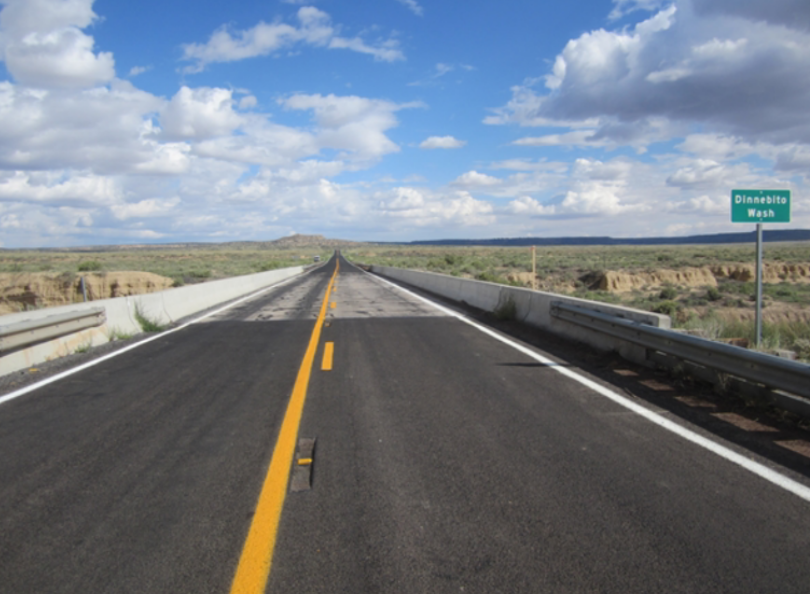Dinnebito Wash Bridge project winding down on SR 264
Dinnebito Wash Bridge project winding down on SR 264

Looking at State Route 264 on a map, it appears as a jagged east-west line in the northeast corner of Arizona.
But appearances can be deceiving. SR 264 is a vital connecting corridor for the Hopi Tribe and other area motorists, much like State Route 51, Loop 101 and Interstate 17 are for Phoenix area commuters.
Winding from US 160 near Tuba City, the state highway links together all 12 Hopi villages and continues on past Steamboat and Ganado and other destinations. The 154-mile Arizona portion ends at the New Mexico state line near Window Rock, where it continues east as NM 264.
This is why the Arizona Department of Transportation rehabilitation of the Dinnebito Wash Bridge on SR 264 near Hotevilla-Bacavi, milepost 363, is so important.
The deck replacement project, which is nearing completion, is located west of Third Mesa, one of three mesas on the Hopi Reservation that are comprised of the 12 Hopi villages.
Despite its importance to SR 264 travelers, by bridge standards, this bridge is short at only 212 feet long, said Mokarr
om Hye, Senior Bridge Engineer with the ADOT Bridge Group.
“The main work is replacing the bridge deck,” Hye said. “We demolished it completely. We are increasing the deck thickness.”
Originally constructed in 1955, the steel girder bridge allows travelers to cross the Dinnebito Wash about three miles west of Hotevilla-Bacavi Village and 40 miles east of Tuba City.
“It is in a remote area, which makes it challenging,” Hye said. “It is really in the middle of nowhere.”
There’s no quick and easy way to get to milepost 363 on SR 264 from central Phoenix. It’s a 276-mile journey starting with Interstate 17 northbound to Flagstaff, Interstate 40 eastbound to Winslow, State Route 87 northbound to the town of Second Mesa and then heading west on SR 264, past Hotevilla-Bacavi to the destination.
Crews are in the second phase of the project. They’ve poured concrete on one half the bridge and are working on the other half.
Since the rehabilitation started in May, SR 264 has been reduced to one lane of alternating travel on the bridge from 6 a.m. to 6 p.m. daily, including weekends.
“In terms of schedule, we are on schedule,” Hye said. “The roadway is scheduled to reopen this fall.”
